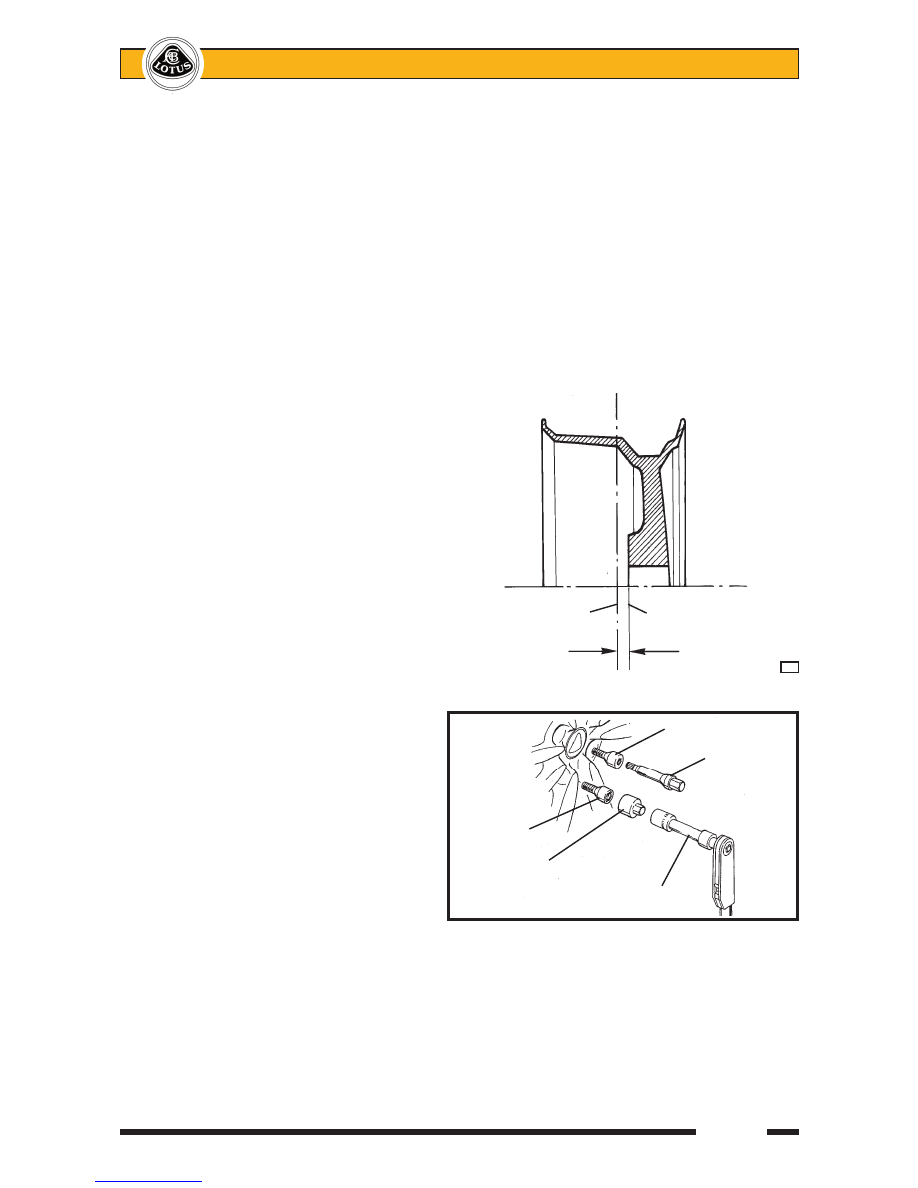Lotus Elise / Lotus Exige. Instruction - part 50

Page 3
Lotus Service Notes
Section GH
Type - Std. - Elise Rimstock, cast alloy, 8 spoke, Hi-power Silver
- Exige Rimstock, cast alloy, 8 Y-spoke, Black
- Option Rimstock, lightweight forged alloy, 7 split-spoke,
Silver painted or natural anodised finish.
Front wheel max. load rating 255 kg
Size - front - Elise std 5.5J x 16 (cast)
- Elise option 6.0J x 16 (forged + AD07 or A048)
- Elise option 6.5J x 16 (forged + A048)
- Exige 6.5J x 16
- rear 7.5J x 17
Inset - front - 5.5J & 6.5J + 31.3 mm
- front - 6.0J + 25.0 mm
- rear + 38.0 mm
PCD 100 mm
Wheel bolt torque 105 Nm (77.5 lbf.ft)
Centre spigot hole diameter 56.5 mm
Radial run-out at bead seat 0.3 mm max.
Lateral run-out at bead seat 0.3 mm max.
Note that the inset figure is the displace-
ment of the wheelrim centreline relative to the
wheel/hub mounting face. A positive inset
indicates that the wheelrim centreline lies in-
board of the wheel mounting face, whereas a
negative inset means the wheelrim centreline
is outboard of the mounting face.
Wheel Bolts
The wheel bolts used are of a special
design to suit the small diameter fixing tun-
nels in the wheel centres. The bolts have an
M12x1.75 thread, 60° conical seat, and a 10
spline socket head for which a special exten-
sion tool is supplied with the car.
A 17 mm a/f deep socket and 1/2 inch
square drive wrench should be applied to the
extension tool, with a tightening torque of 105
Nm required.
Note that on models specified with up-
graded, 4-piston, front brake callipers, the disc
mounting bells are increased in thickness to
provide the necessary wheel clearance to the
callipers. This also demands longer wheel
bolts which use the standard spline head, with
no coded security bolts fitted:
Standard bolt; B117G6000F 26mm thread length Head outside diameter: 22mm
Long bolt; C117G6000F 28mm thread length Head outside diameter: 19mm
To protect against wheel theft, one of the four bolts securing each wheel is key coded, and requires a
corresponding coded extension tool. Rotate the tool until full engagement into the bolt head is ensured before
applying release torque. Note that an alignment mark is provided on the coded bolt head and tool to aid refit-
ting. Both the standard and coded spline drive extension tools are stowed in the vehicle tool kit, and should
remain with the car at all times to allow servicing to be performed.
INSIDE OUTSIDE
face of face of
wheel wheel
Wheelrim centreline Wheel mounting face
Inset (positive shown)
g02
Standard wheelbolt
Standard tool
Coded
wheelbolt
Coded
tool
17mm socket, extension
& torque wrench
ohs114a